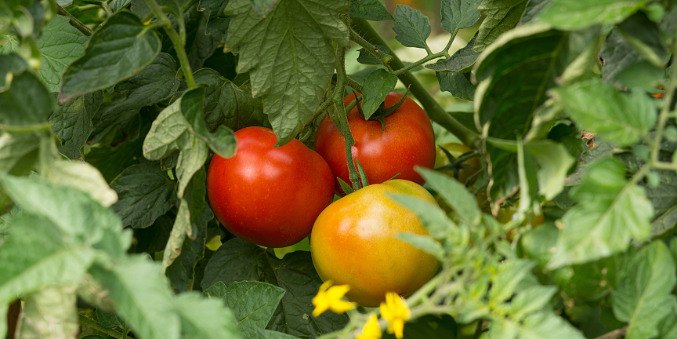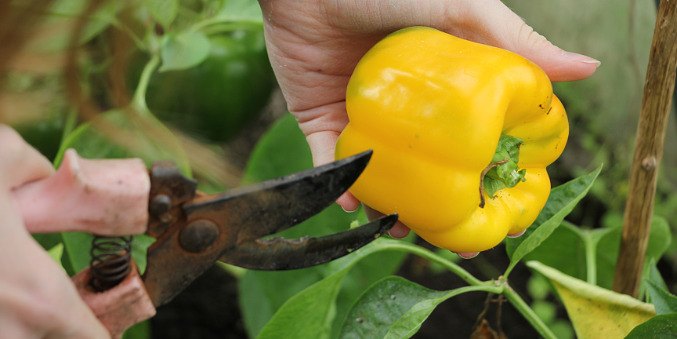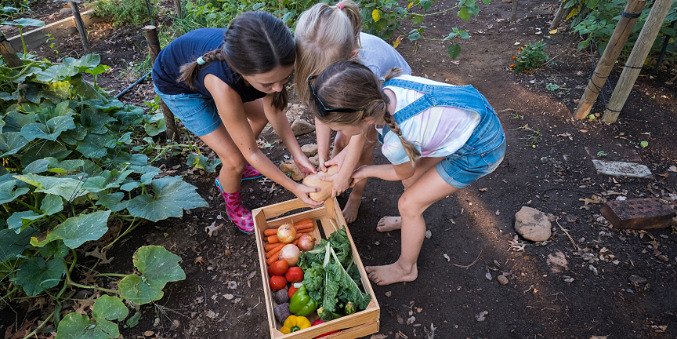
Top tips for harvesting homegrown veg
5 Minute Read
There's something incredibly satisfying about growing vegetables and watching them flourish under the summer sun. The anticipation of harvesting fresh, homegrown produce is enough to bring joy to any gardener's heart.How to harvest homegrown fruit and vegetables
With this guide, you'll learn how to get the most productivity and happiness from your summer vegetable garden with our harvesting top tips.Timing is everything:
One of the keys to a successful harvest is knowing when your vegetables are at their peak ripeness. Each vegetable has its unique signs of readiness; for example, tomatoes should be plump, brightly coloured, and slightly soft to the touch, while courgettes are best while they're young and tender. Regularly check your plants and keep a calendar of estimated harvest times to avoid missing the perfect moment.

Harvesting techniques:
The use of an efficient harvesting technique leads not only to a greater yield but also to a healthier plant. When picking vegetables like peppers, cucumbers, and aubergines - use secateurs to avoid damaging the plant.
Leaves such as lettuce and spinach can be harvested by plucking the outer leaves, leaving the inner ones to continue growing. With root vegetables, gently loosen the soil around them before pulling them out. By harvesting carefully, you can encourage your plants to keep producing throughout the season.

Herbs glorious herbs:
Thankfully, herbs are frequently harvestable, and the more you pick them, the bushier and more productive they become. Snip off the top leaves of herbs like basil, mint, and coriander regularly to encourage new growth. In return, you'll have an abundance of fresh herbs to elevate your culinary creations all summer.

Preserving your harvest:
If your garden produces more vegetables than you can consume immediately, consider preserving the surplus for later use. Canning, freezing, and pickling are excellent methods to extend the life of your harvest.

Canning:
Canning is a popular method of preserving high-acid foods like tomatoes, fruits, and pickles. The process involves heating the food in jars to destroy bacteria and create a seal to prevent spoilage. Here's a basic canning process:
- Wash and prepare the fruits and or vegetables.
- Sterilise canning jars and lids in boiling water or a dishwasher.
- Fill the jars with the prepared produce and add any necessary liquids (like sugar syrup or vinegar, depending on the recipe).
- Place the sealed jars in a water bath or pressure canner and process them according to the recommended times for the specific food.
- Allow the jars to cool and check for proper seals before storing them in a cool, dark place.
Freezing:
Freezing is a versatile preservation method for many fruits and vegetables. The low temperatures halt the growth of bacteria, enzymes, and moulds. Follow these steps for freezing garden produce:
- Wash and blanch the fruits or vegetables to preserve their colour, flavour, and texture. Blanching involves quickly boiling the produce and then placing it in ice water.
- Dry the blanched items thoroughly to prevent ice crystals from forming.
- Arrange the items in a single layer on a baking sheet or tray and freeze them until solid.
- Transfer the frozen produce to airtight containers or freezer bags, remove excess air, and label them with the date.
Pickling:
Pickling is a preservation method that involves immersing fruits or vegetables in a brine solution of vinegar, water, sugar, and spices. The acidity of the brine prevents spoilage and enhances the flavour. Here's how to pickle your garden produce:
- Wash and prepare the fruits or vegetables as desired (sliced, whole, or spears).
- Prepare the pickling brine by combining vinegar, water, sugar, and spices and bring to a boil.
- Pack the prepared produce into jars and pour the hot brine over them, leaving some space.
- The jars should be sealed and processed in a water bath canner.
Share the Bounty:
Harvesting isn't just about enjoying the fruits of your labour, far from it - it's also about spreading that joy to others. If your garden is overflowing with produce, lacking in storage space, or you don't fancy preserving, consider sharing it with friends, family, or neighbours.
Why not organise a small garden exchange or donate your surplus to local food banks or community kitchens? Giving back brings a different kind of fulfilment to gardening and connects you with your community.

On that note, let's go and harvest some happiness this summer, so roll up your sleeves and grab a basket!
Comments (0)
Why not be the first to send us your thoughts?
